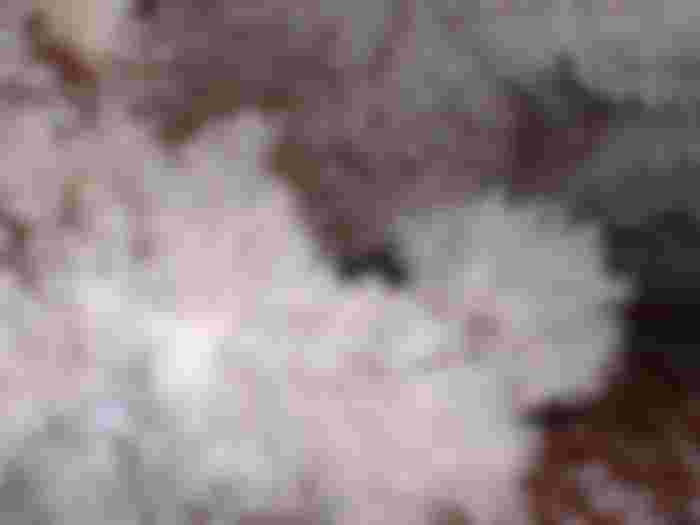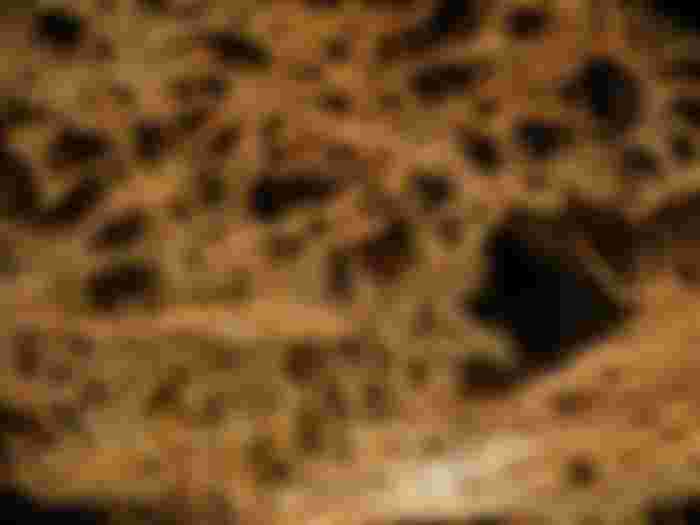Wind Cave National Park
Wind Cave is currently the seventh longest cave in the world, located in the west of the US state of South Dakota, in the Black Hills mountainous region (USA). The total length of the explored canals is just over 248.2 km . The entire cave occupies an area of only 2.6 km², which speaks volumes about the complexity of the impenetrable canals which stretch on three levels and to a depth of 194 m and are still intensively explored. In 1903, Wind Cave became the first cave in the world to be declared a national park. Initially, the park occupied a small area, but over time there was a need to protect the wider area due to the large impact of surface processes on the underground, but also due to the importance of preserving the prairie ecosystem. Today, the park has a total area of 137 km² and encompasses the largest natural area of the preserved American prairie with rich flora and fauna.
The wind at the cave entrance
The American Indians have known the entrance to the Wind Cave since ancient times, and it is a sacred place for them. However, the cave was not officially discovered until 1881. Then Jesse and Tom Bingham found an opening through which they heard the whistling of air. According to the story, the wind was blowing so hard from the opening that it took away Tom’s hat. After a few days when Jesse returned, the wind changed direction and started blowing towards the inside of the cave. Today we know that strong wind movement is associated with the difference in atmospheric pressure between the cave and the surface. When the air pressure is higher at the surface, air enters the cave to raise the pressure and equalize it with that at the surface. When the pressure is higher inside the cave, air comes out of it to the surface to reduce the pressure inside the cave. A large cave like Wind Cave with a few small entrances “breathes” much more intensely than smaller caves with larger openings. Also, rapid weather changes, which are accompanied by rapid changes in air pressure, are a feature of the South Dakota climate. Probably on the day the Birgham brothers discovered the cave, a great storm was approaching, which was accompanied by a rapid drop in atmospheric pressure (cyclone). The high pressure in the cave quickly pushed the air through small openings, which created the wind after which the cave got its name. The flow of air through the natural opening of the cave also helps to determine the approximate volume of the cave passages. According to the amount of air coming out of the cave, the volume of the cave itself can be determined. According to barometric flow measurements, less than 10% of the cave is now thought to have been explored. Although this method cannot measure the length of the canal itself, barometric measurements give researchers an idea of the overall size of the cave.

The origin of the caves of the Black Hills region
The formation of caves in the Black Hillls region is an example of complex speleogenesis, one of the most complex in the world. The origin of the caves is related to the denudation of Pahasap limestone deposits, which were deposited during the Lower Carboniferous in shallow-sea conditions approximately 350 million years ago. Simultaneously with the deposition of limestone, layers of gypsum and anhydrite (calcium sulphate) also precipitated from the seawater, especially during drier periods. The gypsum formed irregular and unstable zones between the limestone deposits. Mobilization, hydration, recrystallization, reduction, and dissolution of sulfates caused the formation of cracks and breccias in the surrounding limestone rocks. Gypsum was pressed and crystallized into the irregular cracks thus formed. Over time, most sulfates were replaced by calcite and quartz, forming calcite veins surrounded by a crumpled quartz-rich bedrock. At the end of the Lower Carboniferous, the sea receded, limestone deposits were found in terrestrial conditions, so karstification began. Because sulfate ions were released after the conversion of gypsum to calcite, they were able to form sulfuric or sulfite acid, which dissolved limestone and formed the first cave cavities (approximately 320 million years ago). After this first period of cave formation, re-transgression of the sea during the Upper Carboniferous (approximately 300 million years ago) caused the deposition of red clay, limestone, and sandstone above the Pahasap limestones. These sediments filled the surface depressions and most of the cave passages formed in the previous period. Such paleofills are visible today in the upper levels of the cave.

Over the next 240 million years, changes in transgression and regression, sedimentation, and denudation of sediments continued. Cave development was probably slow until the most recent tectonic activation of the narrower area during the Tertiary. With the ascent of the Black Hills massif, new cracks in the limestone deposits were created, which enabled the free movement of water and speleogenesis - the formation of caves. The Wind Cave cave was thus formed during the Tertiary, probably by the action of artesian groundwater, although there is evidence for the action of thermal water as well . The water that shaped the cave did not flow through it like a river, but filled it over a very long period, allowing it to gradually dissolve and expand small cracks to large channels, and create a complex shape of the cave itself, reminiscent of a maze in layout. Most of today’s cave structure is inherited from older periods, but the appearance of the cave cavity network is closely related to stress directions during the uplift of the Black Hills in the Late Cretaceous when older cracks were reactivated .

Groundwater - a valuable Wind Cave resource
Geologists believe that water levels began to slowly decline 40 to 50 million years ago. Today, the groundwater level is approximately 150 meters below the surface and is located at the lowest level of the cave called Lakes. But water still acts on the formation of the cave. Slow seepage creates interesting accumulation forms on the walls and ceilings of the cave, such as coral whitefish (cave popcorn), needle crystals of calcite or aragonite (frostwork) and helicite, which in some places grow in "bushes" two meters high. Cave rafts develop in the deepest parts of the cave on the surface of the calcite lake. These thin laminates of calcite are so light that they float freely on the surface of the lake thanks to the surface tension. If they become too heavy or some disturbance occurs they sink to the bottom of the lake or stick to the shores of the lakes. The discovery of the remains of cave rafts at the bottom of today's dry parts of the cave testifies to the change in water level. Whitefish that require more water to form, such as stalactites or stalagmites, are rare in Wind Cave because of the dry climate and low-permeability rocks above the cave system.

Secret sigs
The most striking micromorphological form of the Wind Cave cave is certainly the boxwork . In no other known cave in the world is this speleogen so well developed and in such large quantities. The boxwork is constructed of thin, sharp surfaces of calcite that extend from the walls and ceilings of the cave forming a beehive-like shape. The surfaces intersect at different angles forming “boxes” on the cave walls. Boxwork is best developed in dolomite deposits in the middle and lower levels of the cave, and its origin is one of the greatest mysteries of this cave. According to geologists and world-famous speleologists A. Palmer and M. Palmer (1989), most of the cave walls contain more resistant surfaces of calcite between which parts of the parent rock built of limestone and dolomite have been removed by denudation. Namely, the structure of the boxwork follows the narrow cracks that arose as a result of stress during hydration and dehydration of gypsum, which was gradually replaced by calcite. The surrounding parent rock is less resistant to wear, and is probably mostly removed by dissolving in sulfuric or sulfuric acid, resulting in much smaller pores. These porous zones are easily denuded during cave development, especially by corrosion in contact with water and moist air in the cave.

The cave environment is threatened by tourism
Due to the growing number of visitors, there are more and more environmental problems in the cave. Even with caution from direct physical contact (touching walls), particles of clothing fibers, hair, or skin cells accumulate on cave walls and floors along paths and can become allochthonous food that allows mold and bacteria to grow. The number of such particles that fall off an individual is small, but when multiplied by approximately 100,000 visitors a year, the result is a dense cover of human waste. That’s why every year volunteers clean parts of the cave, even the smallest dust. Electric lighting in the cave also causes problems: it raises the air temperature and encourages the growth of green plants. Therefore, the park seeks to reduce the impact of lighting and energy consumption during the tour. Artificial, subsequently dug, entrances to the cave caused a change in the cave climate, allowing increased air flow. The most significant consequence was the collapse at the entrance to the cave due to increased freezing and thawing. To make it easier to control such changes, air blocks were built at all artificial entrances to return the cave to its natural state. One of the most serious problems is on the surface above the cave itself. Roads, parking lots and facilities change the direction and amount of water flowing underground. Toxic chemicals, such as oils and gas emitted by vehicles, seep into the cave. Therefore, a filtration system is installed under the concrete car park and the condition of sewer systems and petrol tanks is often checked to ensure that there are no leaks. Namely, pollutants passing through the cave can harm the life in the cave, reduce the growth of crystals and affect the quality of groundwater.





onek valo vabe kaj korbo ekhane amr kace to Ekhon onek valo lagche